May 19, 2025 | 17:57 GMT +7
May 19, 2025 | 17:57 GMT +7
Hotline: 0913.378.918
May 19, 2025 | 17:57 GMT +7
Hotline: 0913.378.918

The model has the great advantage of not using antibiotics thanks to effective disease prevention. Photo: Quang Linh.
Several farming households in the district of Phu Luong have intrepidly invested in chicken farming in accordance with a farm model with a scale of over 500 heads; some even farm between 2,000 and 10,000 heads, primarily colored feathered chicken. There are restrictions on disease-free and disease-safe due to free-range farming.
The Thai Nguyen Provincial Agricultural Extension Center has implemented a model of free-range colored feathered chicken husbandry based on the following criteria in order to develop locally sustainable livestock production, reduce the use of antibiotics, and enhance disease-free zones in poultry. VietGAHP standards connect the product consumption of three households in the commune of Yen Trach, district of Phu Luong.
The scope of the model ranges from 500 to 3,000 chickens per household, using hybrid Ri chickens reared semi-free-range with separate fences, nets, and walls from human residences. Applying the VietGAHP good husbandry practice procedure for selecting breeds, lodging, food, disease prevention, etc. helps limit the spread of diseases, reduce the use of antibiotics, and enhance product quality.
Ms. Nguyen Thu Luong, a representative of the Thai Nguyen Agricultural Extension Center, stated that the key to reducing the use of antibiotics on livestock is the timely administration of injections and the administration of sufficient quantities of vaccinations when necessary. Farm-raised chickens of one day old are vaccinated with marek and have quaranteen certification.
In addition, the Center provided approximately 31,500 Gum, chicken pox, ND-IB, avian influenza, and other probiotic and antiseptic chemicals.
"The Agricultural Extension Center has rigorously implemented and recommended disease prevention to agricultural households. Prior to importing breeding poultry, farmers are urged to sterilize their flocks with lime powder and antiseptics. In addition, neutralize foul aromas and toxic vapors in the barn with the biological product Max 260. Ms. Nguyen Thi Luong stated that the absence of toxic vapors helps pets become less ill, reduce coughing, and develop more rapidly.
By implementing comprehensive technical measures, all three agricultural households are exempt from using antibiotics, assuring livestock quality and achieving VietGAHP certification. The results indicated that the survival rate had reached 95% and the weight of 13-week-old poultry had reached 2.3kg.
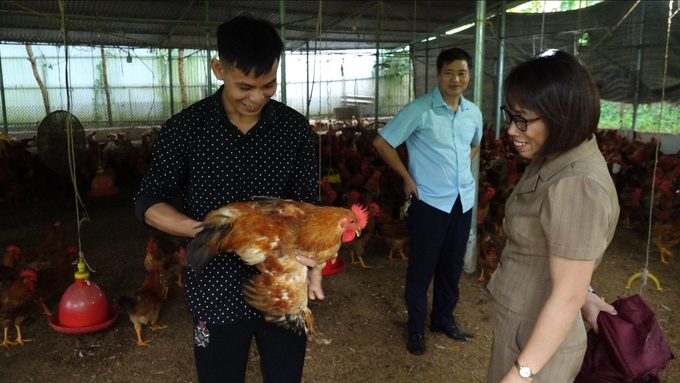
Mr. Loc Van Tinh (black shirt) plans to double the number of chickens raised according to VietGAP standards next year. Photo: Quang Linh.
The model has improved the economic efficiency of producers by assuring disease safety. With a scale of 1,000 hybrid Ri poultry, reared at 13 weeks of age, and a current selling price of approximately 70,000 VND/kg, the farmer earns approximately 25 million VND (excluding labor and barn depreciation).
The above-average profit margin creates a substantial incentive for local producers to adopt the VietGAHP poultry farming model.
Mr. Loc Van Tinh, as a pioneer household participating in the model, raises 4,000 animals per batch using the VietGAHP method. According to him, transitioning from traditional livestock farming to VietGAHP helps his family limit the use of antibiotics in livestock farming, allowing his family to limit the use of antibiotics. Meat quality has improved and many units trust it to purchase.
"Disease prevention is always our top priority; treatment is only a temporary solution." Therefore, the farm is always completely vaccinated and disinfects the barn on a regular basis," Mr. Tinh explained.
In addition, to safeguard the environment, all model-participating households have barns that assure environmental hygiene, where waste is collected and converted into organic fertilizer to increase household income.
Mr. Nguyen Dinh Thong, Deputy Director of the Thai Nguyen Agricultural Extension Center, determined that, based on the obtained results, particularly in terms of disease safety, the model has numerous expansion opportunities in the province.
By raising animals in accordance with VietGAHP standards, producers can regulate the quantity of antibiotics used for disease prevention and barn floor treatment during the breeding process, thereby reducing the use of antibiotics and stimulants. Consequently, chicken ensures quality and food safety and hygiene.
Mr. Nguyen Van Bieu, chairman of the Yen Trach Commune People's Committee, remarked that the VietGAHP model for rearing colored feather chickens has demonstrated numerous benefits thus far. In the future, the locality will promote households to participate in the model of strengthening production connections in order to have more proactive and efficient product consumption plans, thereby bringing producers high economic efficiency.
Translated by Linh Linh
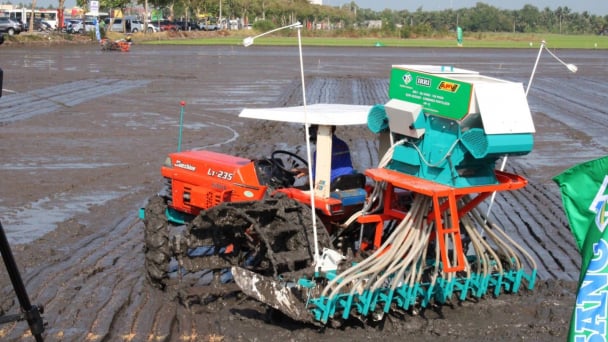
(VAN) The German Agricultural Society (DLG) explores the possibility of establishing a mechanization service center in Vietnam’s Mekong Delta to support farmers in accessing and utilizing advanced machinery.
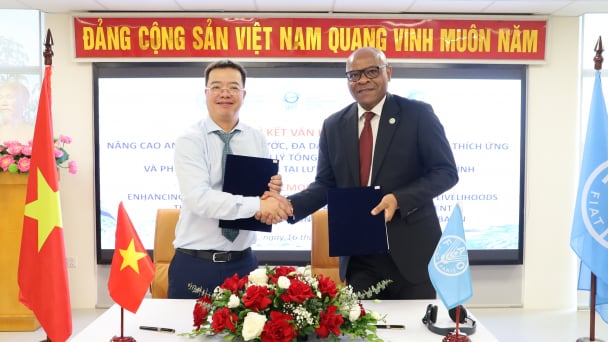
(VAN) On May 16, the Department of Water Resources Management, in collaboration with the Food and Agriculture Organization of the United Nations (FAO), held a signing ceremony for the GEF-8 project document.

(VAN) Food safety, mechanization, vocational training, and market opening are key areas of cooperation expected between the Vietnamese Government and the Federal Republic of Germany.
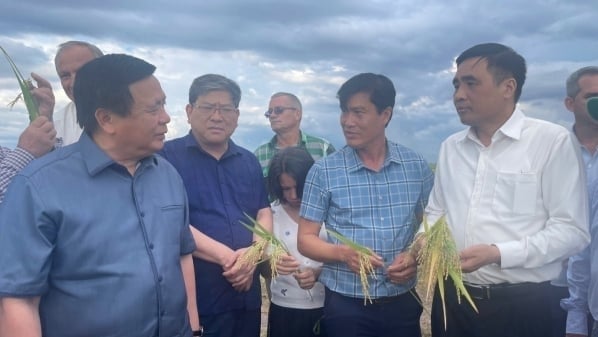
(VAN) Deputy Minister Nguyen Quoc Tri also expressed his hope that Cuba will soon overcome its current challenges, attain food security, and further expand cooperation with Vietnam.

(VAN) The project contributes to enhancing the resilience of communities vulnerable to the impacts of climate change, with a primary focus on local women.

(VAN) Green materials help save energy and resources. However, after more than 10 years, Vietnam has only developed over 200 green buildings with more than 6 million square meters of floor space.
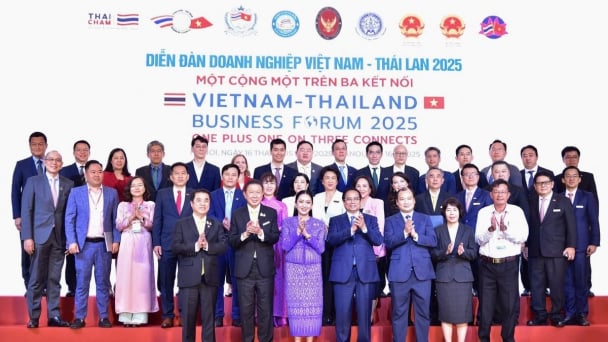
(VAN) Vietnam - Thailand Business Forum 2025: One plus one on three connects, marking a milestone in the comprehensive strategic partnership between the two nations.